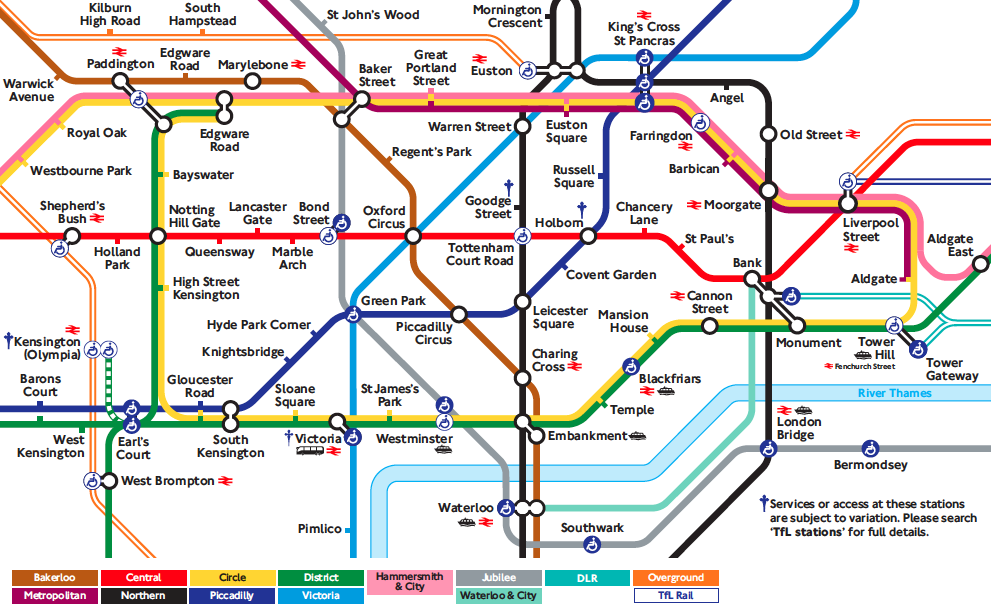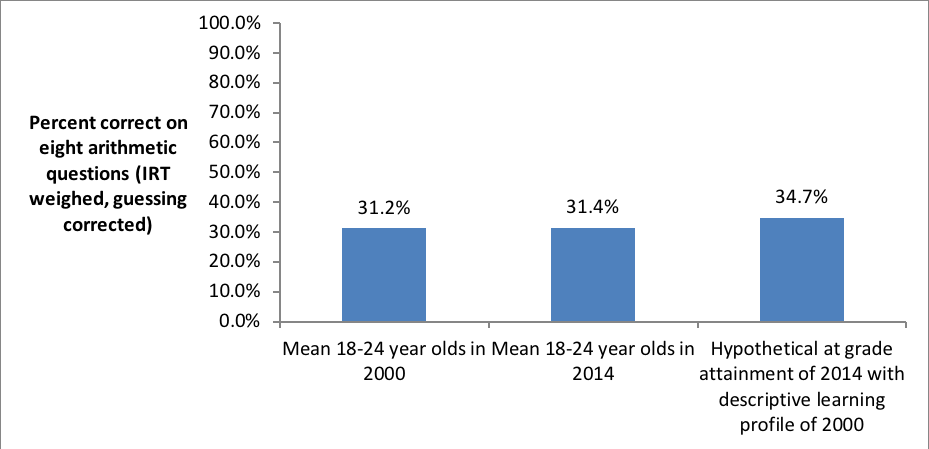Lant Pritchett
Blavatnik School of Government, University of Oxford
Blog
As I went from my new home in Oxford to arrive at the Center for Education Economics in London to give a presentation about a new paper on the lack of education progress in Indonesia—in spite of schooling progress—I stumbled over the perfect metaphor.
I arrived at London Paddington train station (on the pink line in the northeast portion of the London Underground map below) and Google Maps told me I needed to get to St James’s Park station (in the middle of the map on the yellow/green lines). At the Paddington platform there were two lines: Hammersmith and City (pink) and Circle (yellow) and on each I could go two directions: east or west.

This meant there were three mistakes and one right way to go. The situation was an excellent metaphor for the pivot to learning that education systems in the developing world are attempting to make. For the last 30 years or so, education systems in the developing world have been built and oriented to expansion to universality. This meant the measuring, monitoring, and feedback loops built to guide the systems were built to guide the expansion of access and the number of school years children complete. However, the real goals of education systems have always been education—the acquisition of skills, capabilities, attitudes, dispositions, beliefs—not just ensuring “time served” in a building called a school. There is an increasing recognition of a learning crisis and hence the need for a pivot to learning.
The first way I could go wrong was to get on the Hammersmith and City line headed West. This is in some ways the worst, but best mistake. It is the worst because it is headed in entirely the wrong direction. Yet, it is also the best because as long as I look at the map (and the stops), I will immediately realize I am on the wrong train and headed in the wrong direction. As soon as I hit the Royal Oak stop and realize the mistake, I can change my train and direction.
The second way I could go wrong is by getting on the Circle line headed east. Since the Circle line is as described—a circle—I know for any given stop I could go east or west and eventually arrive. But going east is a mistake as it will take me 19 stops, rather than the 8 stops if I go west. So, the question is: what do I do when I hit Baker Street stop and realize that, although I will eventually arrive, the direction I am headed will take much longer? Complacency in this case is to just stay on the train and wait (and wait and wait and wait).
The third way I could go wrong is more interesting and where the specifics of starting at Paddington make the metaphor interesting. I could get on the Hammersmith and City line headed east. If the only information I have is the name of the stops I am traversing on my journey, I will go nine stops seeing exactly the same names I would see if I were on the Circle line. It will not be until Aldgate East that the stops will tell me I have been on the wrong line the whole time. And now I have been on the train for 24 minutes and gone ten stops (Aldgate East is the 10thfrom Paddington) and am now actually further from St James’s Park Station than when I started (3.3 miles versus 2.4 miles).
The key finding of the Indonesia paper is in Figure 1: in the 14 years between 2000 and 2014 the average percent correct on an index of some primary school arithmetic questions only increased from 31.2 to 31.4 percent in a cohort aged 18 to 24—in spite of a 20 percentage point increase in the fraction of the cohort who had completed senior secondary school or higher. At that pace of progress, it will take a thousand years for a cohort to reach even 50 percent correct—much less to reach the ability to use mathematics creatively in practical problem solving and much, much less to be ready for contributing in science or technology.
Figure 1. Only a tiny increase in cohort (aged 18 to 24) capability in arithmetic over 14 years in Indonesia—even though secondary school completion increased 20 percentage points

What makes this lack of progress in learning especially interesting for me is that this happened in Indonesia from 2000 to 2014 which in many ways was a country making rapid progress. Indonesia had a remarkably smooth transition from a long period of authoritarian government to democracy in 1999 and onwards. A thorough decentralization program was enacted in 2000 to make government “closer to the people” and more effective. Economic growth was rapid—per capita growth doubled.
And it is not as if Indonesia was complacent about learning progress in the sense that they were completely uninformed or apathetic. Indonesia has participated in international assessments (PISA and TIMSS) and knew they were far, far behind the OECD (and even further behind the high performing East Asian states like Korea or Singapore). And Indonesia was doing things. A constitutional commitment to spend 20 percent of the government budget on education meant education expenditures increased substantially. They introduced a reform that doubled pay for teachers. The Ministry of Education was active and engaged in implementing lots of programs meant to improve quality.
Indonesia was not complacent in the sense of standing on a platform. They were on a train and they were moving. But the frequent signals of progress, the data that dominates the day to day feedback loops, were about enrollments and grade attainment—on which they were moving; expenditures—on which they were moving; inputs and program implementation—on which they were moving.
But did they have the ability to recognize they were hitting the right stops, but were not on the right train? That the motion they were experiencing and documenting just wasn’t going to lead them to where they needed to go? That ultimately, to get to the rates of progress they needed (and to positive progress on learning at all) they might have to take hard decisions and get off the train they are on (and which is moving along so nicely) and tackle the hard challenge of changing direction?
This blog is related to the commentary by Lant Pritchett that was included in the Centre for Education Economics Annual Research Digest: Evidence from the Developing World. Pritchett’s individual contribution highlighted the research of the RISE Indonesia Country Research Team and their upcoming paper, "15 Years of Education in Indonesia: Rising Enrolment and Flat Learning Profiles."
RISE blog posts and podcasts reflect the views of the authors and do not necessarily represent the views of the organisation or our funders.